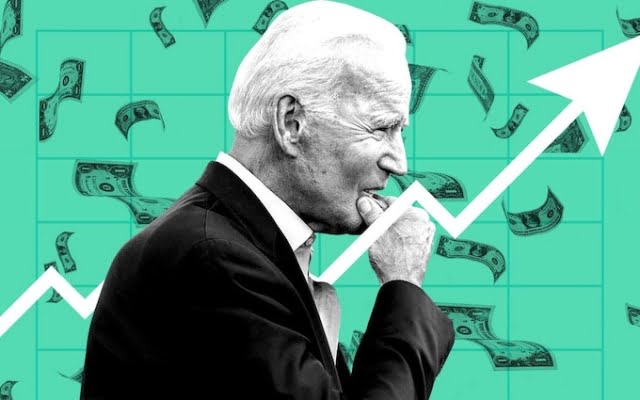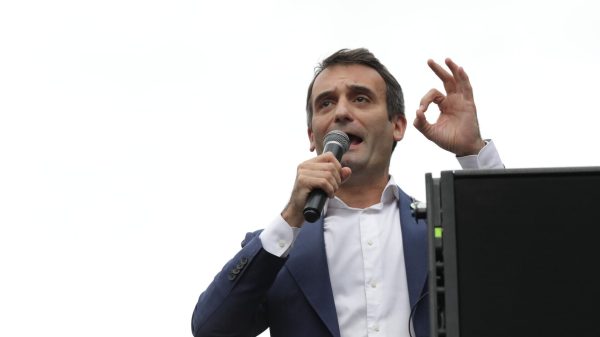 There is a risk that the US government may default on its debt. Photo: The Telegraph
There is a risk that the US government may default on its debt. Photo: The Telegraph
A unique rule in America's financial system means the world's largest economy is about to run out of money.
U.S. lawmakers are debating whether to raise or suspend the so-called «debt ceiling» , which determines how much money the US government can borrow.
Treasury Secretary Janet Yellen warned that if the impasse between Republicans and Democrats is not overcome, the administration will not have enough cash to pay off debts already June 1.
The political impasse over its increase is deepening. . If it is not resolved, there is a looming risk that the US government may default on its debt.
The consequences will be global and devastating. “That's when you get into a real potential disaster situation in the financial market,” says Andrew Hunter, Deputy Chief Economist for Capital Economics for the United States.
What goes wrong and how bad could it be?
What is the US debt ceiling?Since 1917, the United States has had a law that sets a statutory limit on the total amount of debt that the government is allowed to have. The limit was initially set at $11.5bn (£9.2bn).
The ceiling is a bit like the fiscal rules that the chancellor sets himself in the UK, but it's set from outside. “The main problem is that this is considered completely separate from decisions about how much the government should spend and what level of taxes should be,” says Hunter.
Congress passes new spending bills that will increase the level of debt, but the debt ceiling is not raised until it is exceeded.
This figure has also been set as a general monetary figure that does not automatically change . to ward off factors such as population growth or inflation, acting like a kind of gastric band.
The US government's debt has increased under every president since Herbert Hoover. In response, the debt ceiling was raised more than 100 times. Now it is 31.4 trillion US dollars.
The US government debt reached this level in January, which means the government is legally unable to borrow more money.
US Debt Ceiling Chart 0405 US Government Net Debt Why has the debt ceiling not been raised?
The debt ceiling could be raised again, but only if it can be voted on through the House of Representatives, which has a Republican majority. When the ruling party does not have a majority in the House of Representatives — as is the case with the current administration — there is no guarantee that an agreement will be reached.
Republicans are trying to use the deadline to force President Joe Biden to agree to spending cuts. On April 26, the House of Representatives approved a bill to raise the debt limit by $1.5 trillion, but only on the condition that spending be cut to 2022 levels and then capped at 1% a year. It is not expected to pass through the Senate, which has a Democratic majority.
Political impasse, which means that the future of the American economy is in purgatory. If an agreement cannot be reached quickly, the results can be explosive.
What happens if the debt ceiling is not raised?
The US government runs a deficit, which means it spends more money than it collects in taxes .
This means two things. First, every year the amount of his debt increases, and hence the cost of servicing it. Second, if it can no longer borrow money, the government will stop covering all its expenses.
The US Treasury's balance sheet at the end of April was $316 billion. “The question is, when will this money run out?” says Hunter. Treasury Secretary Janet Yellen says it will happen in June.
When that money runs out, the government can only spend the money it receives in taxes. Therefore, it will no longer be able to meet all of its public spending obligations, such as paying public sector wages, or service all of its existing debt.
Treasury bonds maturing in June may not be redeemed. According to Hunter, this could trigger a financial crisis.
What happens if the US government defaults on its debt?
Theoretically, if America defaults on its debt, this will lead to shocks in the amount of its national debt.< /p>
The majority (69%) of US debt is held in America. The Federal Reserve owns 21.2%, 12% is owned by pension funds or mutual funds, and 6.7% is owned by US households.
Another 31 percent is owned by foreigners. Japan is the largest holder of US Treasury securities, worth about $1.1 trillion. China and the UK hold $867bn and $654bn respectively.
But if America defaults, the consequences could be much more severe.
“US government debt is considered the safest asset. in the financial system, and it is also a lot. As a result, a very large part of the price of any other financial asset is somehow dependent on the price of US government debt,” says Hunter.
According to Hunter, if the US defaults, there will be a significant surge in borrowing costs in America which, in turn, will cause a corresponding increase in the cost of borrowing around the world.
“Essentially, all of a sudden, every safe asset will suddenly look a lot less safe than before. If this is suddenly threatened with default, then virtually all bets in terms of what happens in the broader financial markets will be taken off,” he adds.
“Failure to reach an agreement at all will lead to more severe macroeconomic shocks, given the current scale of the federal budget deficit and the actions needed to close it quickly,” warned the Organization for Economic Co-operation and Development.
Man has created a problem
However, the question remains how investors will react to a default due to the debt ceiling, because the problem will be completely artificial.
“The big difference between a potential default as a result of a debt ceiling and, say, a default in a country like Argentina that has defaulted numerous times throughout history is that this is possibly the only time a country has ever defaulted. on their obligations. debt is mostly by choice, not by economic necessity,” says Hunter.
There is no suggestion that America cannot afford to continue paying its debts, but the government will be bound by law. “It created a kind of artificial default risk,” says Hunter.
In the past, America has been even closer to the deadline. Back in 2011, the agreement was reached on the day the government was supposed to run out of money. In 2013, there was another sharp decline.
Previously, when the government nearly ran out of money, although interest rates on expiring Treasury bills jumped, yields on 10-year Treasury bonds actually fell sharply. “Even when the deadline was so close, people still didn’t think there was a real possibility that the US government would suddenly stop paying all of its debt,” says Hunter.
The problem was more of a short-term glitch . Long-term yields have slumped, Hunter said, likely on expectations that interest rates will stay low longer due to economic weakness and uncertainty.
But rates are higher this time around. Back in 2011, the federal debt was 65.8% of US GDP. Now it's 98 pcs. Interest rates are also much higher. Both of these factors together mean that the government faces much higher debt servicing costs. «In terms of the sustainability of US public finances, the situation is even worse than 10 years ago,» says Hunter.





















































Свежие комментарии